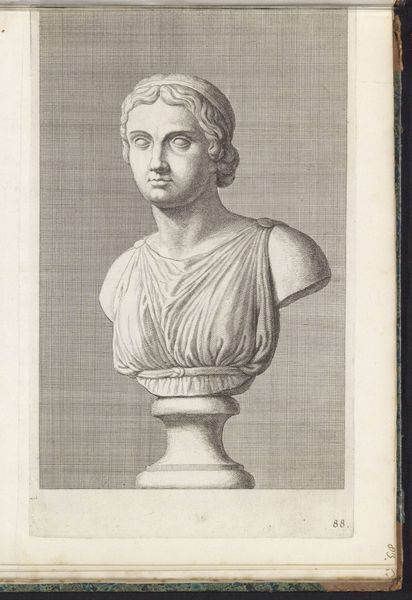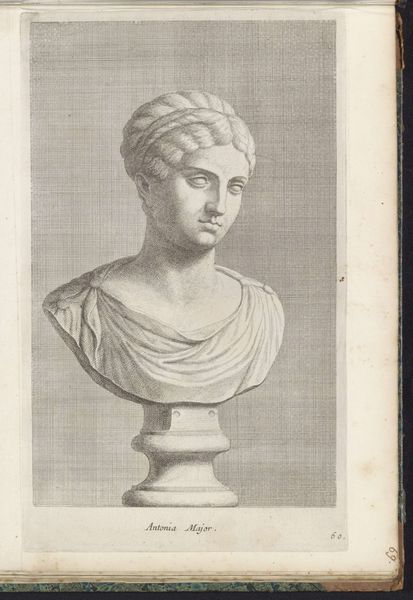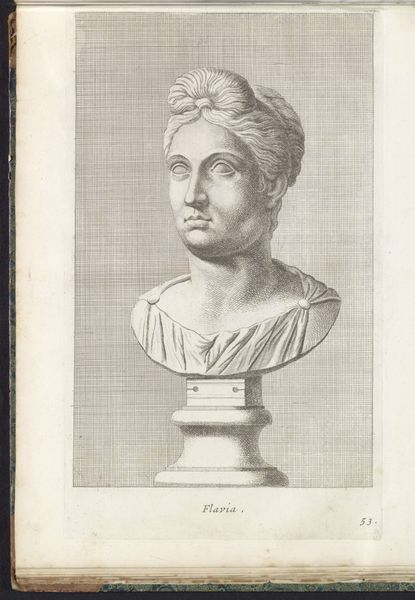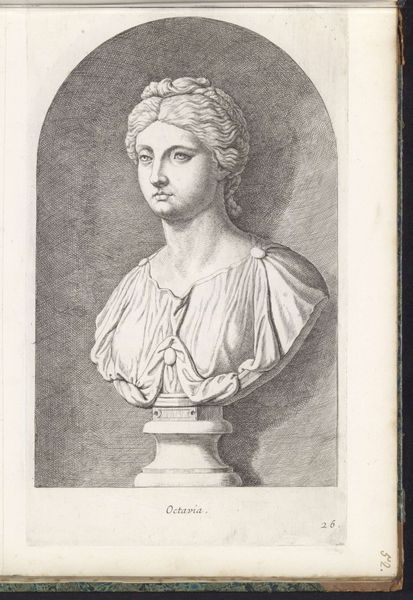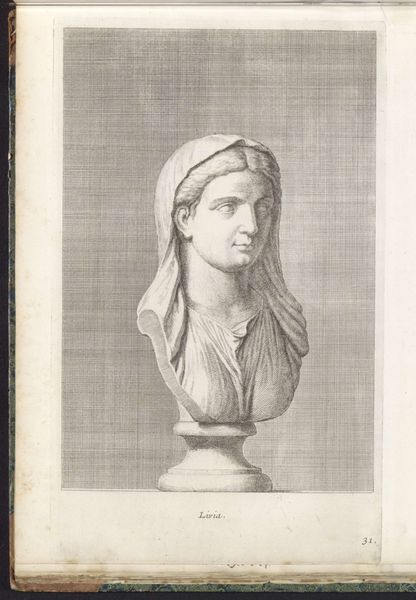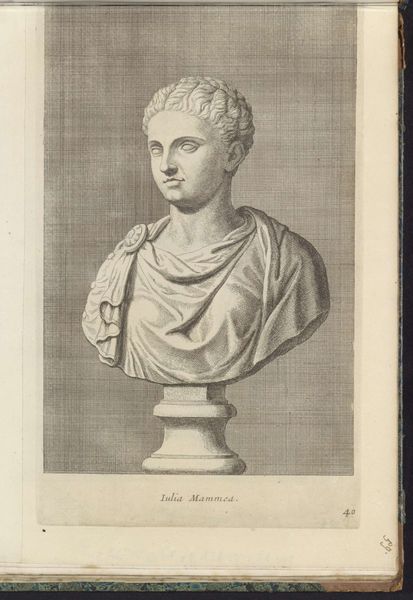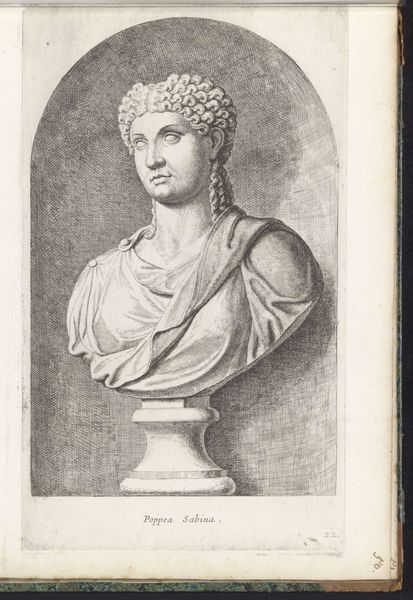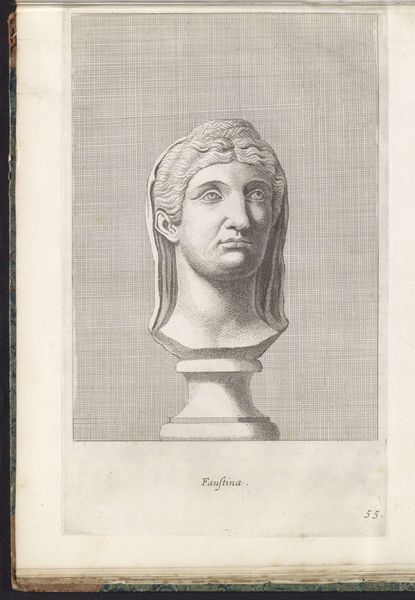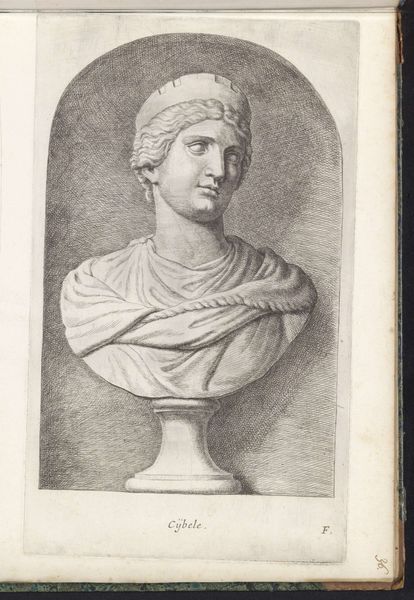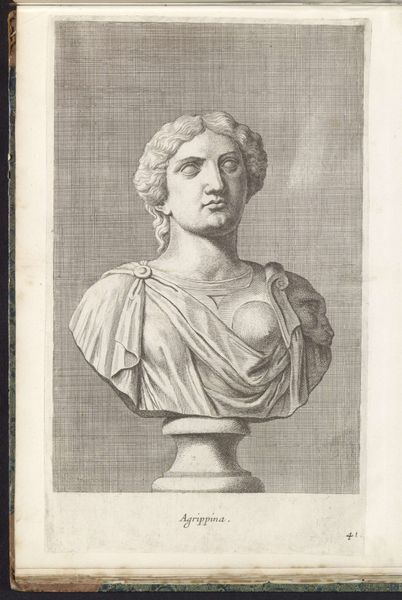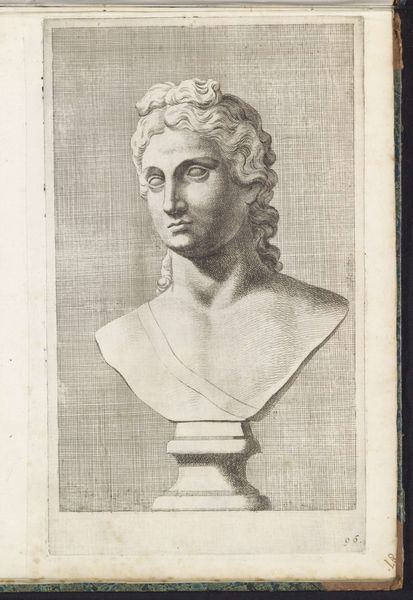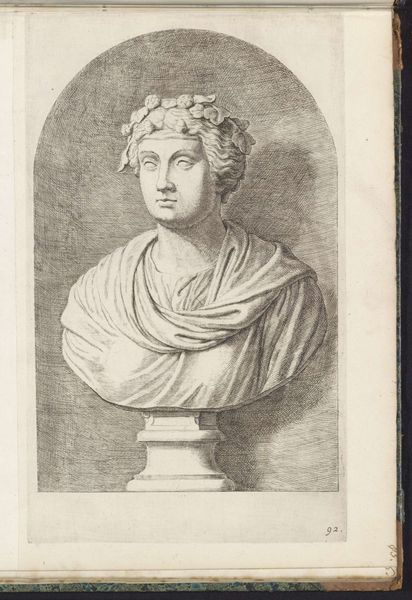
drawing, paper, sculpture, graphite
#
portrait
#
drawing
#
baroque
#
figuration
#
paper
#
sculpture
#
graphite
#
history-painting
Dimensions: height 325 mm, width 198 mm
Copyright: Rijks Museum: Open Domain
Editor: Here we have Hubert Quellinus's "Bust of Cleopatra," dating from between 1646 and 1670. It's rendered in graphite on paper. What strikes me is its somewhat clinical depiction, almost like a study. What do you see in this piece? Curator: For me, this drawing raises questions about production and consumption. While seemingly straightforward, graphite on paper implies a level of accessibility and reproduction quite distinct from, say, a marble sculpture of Cleopatra. Consider the labour involved – not the grand, heroic carving we associate with idealized portraits, but the meticulous, repetitive work of draftsmanship, made available to a wider audience through prints. How does that shift our understanding of Cleopatra's power? Editor: That's an interesting point! So, the medium itself democratizes her image? It makes me think about how images are disseminated. Curator: Exactly! The *means* of production actively shape meaning. Who could afford or access a marble bust versus a printed image derived from a graphite drawing? The baroque style, with its grandeur, clashes with the reproducible nature of this image. Editor: That tension really reframes the piece for me. It’s not just about depicting Cleopatra; it's about *how* her image circulates within a specific socio-economic context. I appreciate seeing how the artistic process contributes to meaning, not just aesthetics. Curator: Precisely! By considering material and process, we unlock the social implications embedded in the artwork itself. We see how art functions not in isolation, but as a product of its time.
Comments
No comments
Be the first to comment and join the conversation on the ultimate creative platform.
